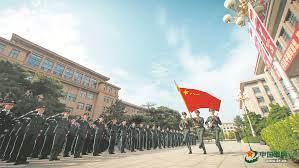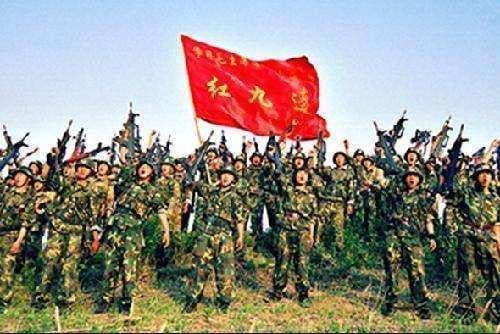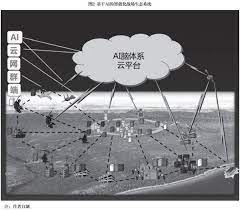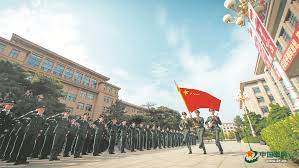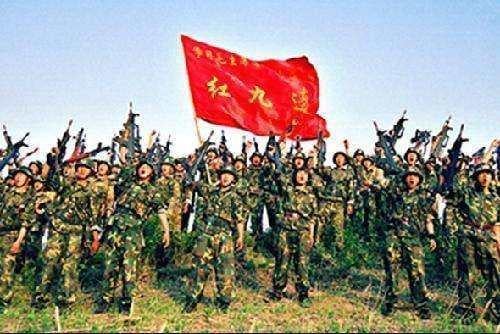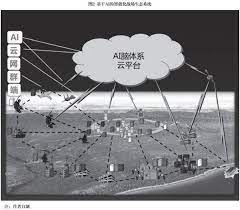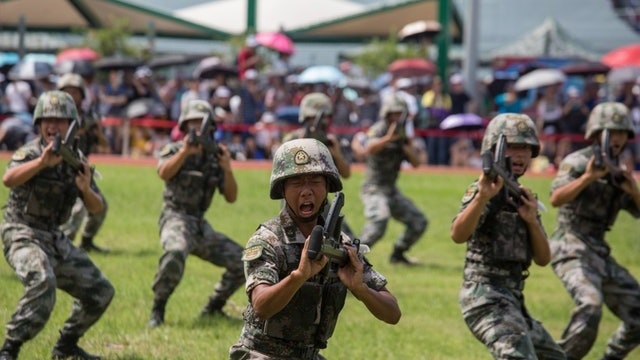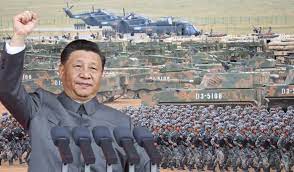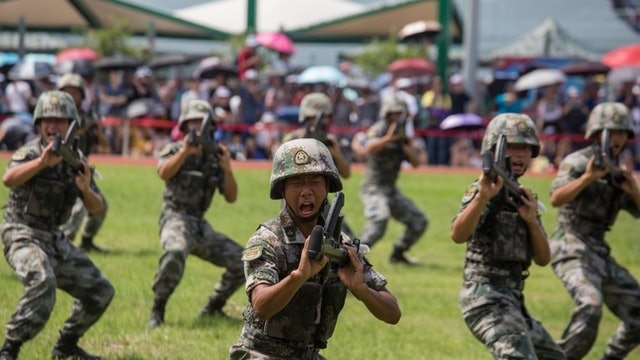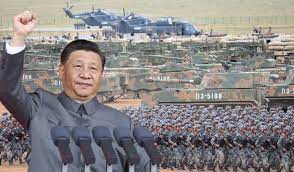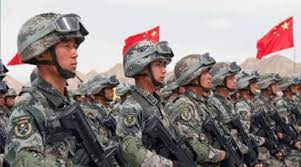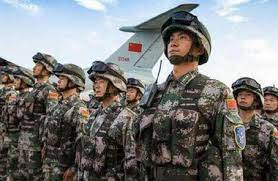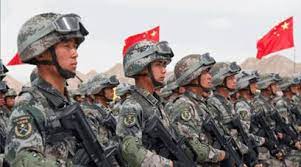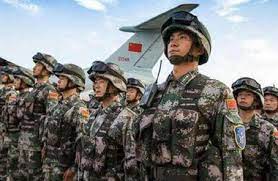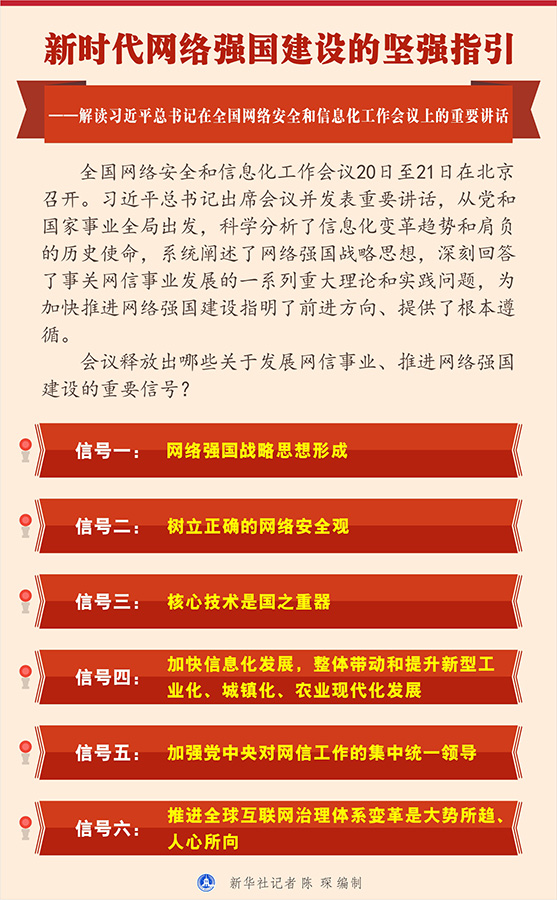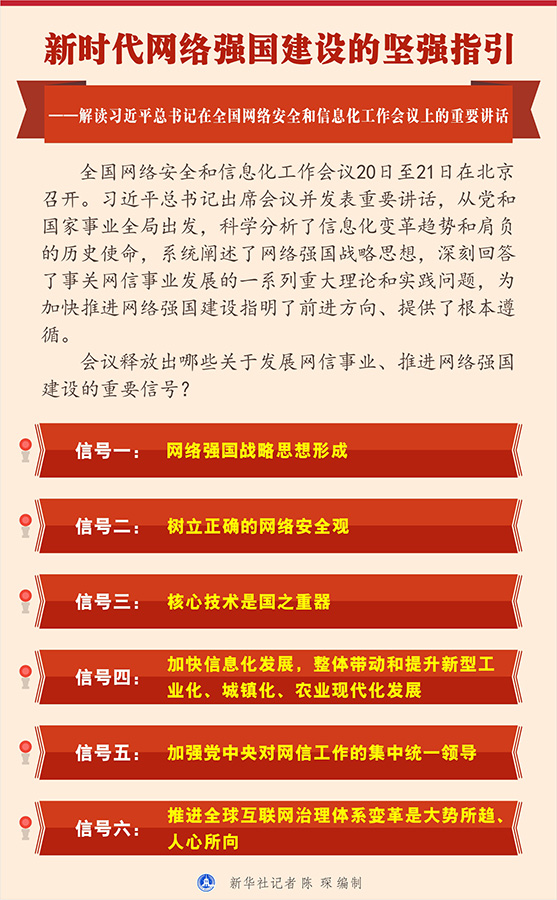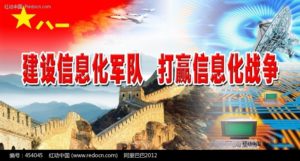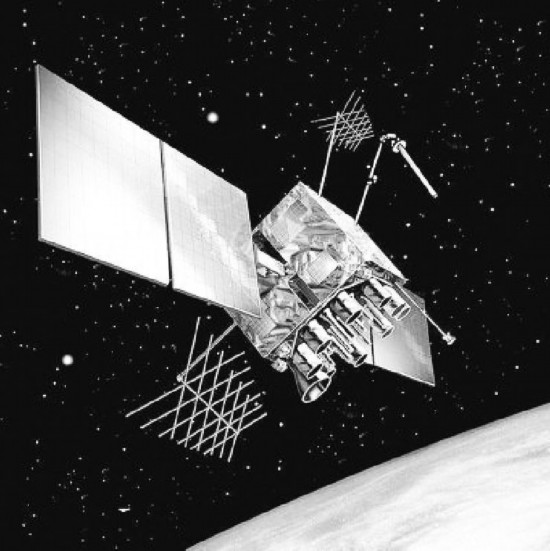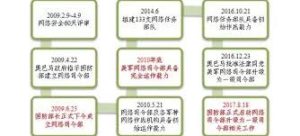To Win The Information-based Intelligent War China’s People’s Liberation Army Must Find Science and Technology Integration Point To Evolve Innovation of Tactics
戰法,即作戰方法,指作戰中運用的策略和技術。 戰法創新,既要深謀“策”,也要鑽研“技”。 有“策”無“技”,心有餘而力不足;有“技”無“策”,雖用力而不得法。 既要有策略指導,又具備技術支撐,方能百戰百勝。 打贏資訊化智能化戰爭,開展以謀為先、以智取勝的戰法創新,必須「策」「技」並施,有效解決理論創新與技術應用脫節、作戰行動與技術路徑脫軌等問題。
思維認知「融」。 現代科技快速發展,正推動未來作戰向高端戰爭演進。 既要搶佔理論制高點,又要塑造技術新優勢,理技深度融合創新戰法,是製勝戰場的要訣。 軍人作為戰法創新的主體,必須深刻認知現代戰爭制勝機理,根植理技融合理念,拓展理技融合思維。 目前,兩個突出問題和傾向值得注意:一是科技素養不夠,容易導致對新的戰爭形態認識不深不透,僅憑以往經驗套路研究戰法,對作戰體系中哪些技術起作用、什麼技術 真管用、對敵形成技術優勢從何入手、與強敵存在哪些技術差、如何避免被敵技術壓制等知之不深,重戰法輕技術、重“智謀”輕“智能”,創新的戰法 看似管用,其實缺乏技術支撐,風險度大。 二是把握不准作戰需求,未來戰場景象描繪不夠清晰,雖然技術原理、制勝機理明白了,但對科技在作戰行動中的運用知之不夠,忽略了人的主觀能動性對作戰效能發揮起到的決定性 作用,重技術輕戰法,就技術研技術,或只鑽研技術性能而不考慮戰法運用,或只知技術功效卻不嘗試戰法創新。 凡此,應把指戰員學科技、懂科技、用科技與科技人員學軍事、懂打仗、研戰法統籌起來協調推進,建立戰技專家融合創新機制,對接研究制勝機理,協同嵌入理技融合理念 ,交互幫帶提升戰法創新素質,形成以作戰行動牽引科技運用、以科技運用支撐作戰行動的思想認識,厚實理技融合開展戰法創新的根基。
作戰設計「融」。 世界上從來沒有完全相同的兩場戰爭,戰法創新可以繼承借鑒,不能複製翻版。 目前,軍事理論創新步伐加快、先進科技發展日新月異,戰爭形態深刻變革,呈現出混合多元、變幻莫測的顯著特徵,顛覆性技術、創新性概念、重塑性理論層出不窮。 理技融合設計未來作戰,才能找準提升戰法創新的起點。 要以敢領世界先的勇氣突破思維定勢,用超前眼光、獨特視角創新作戰理論,開發並落地作戰概念,構想作戰場景,創新戰法打法,先把未來戰場的「底圖」勾勒 好,以此對接現代科技應用、牽引先進技術研發。 同時,設計未來作戰不能超越科技極限過於遙遠地“空想”,應立足於一定時期內的科技可行性,在具有現實或可預期科技運用支撐、擁有技術實現路徑的前提下創新戰法,將技術 阻斷、技術突襲、技術壓制、技術調控嵌入作戰行動。
技高一籌「融」。 在現代戰爭中,人是決定性因素的地位沒有變,而科技對戰爭勝負的影響更加凸顯,爭奪科技勝勢在很大程度上決定戰爭勝負,必須始終把科技運用嵌入作戰鏈條、貫穿作戰全程 ,以技術效應支撐戰法運用,以技術優勢驅動作戰效能發揮。 當前,戰法創新中的理技融合,主要矛盾並非技術中少理論,而是理論中缺乏技術,最迫切的是著力推進前沿科技向作戰理論融合滲透。 要加強以武器裝備平台為依託的實質融合,著眼於最大限度地啟動作戰效能,廣泛進行基於行動效能釋放的裝備作戰運用研究、裝備作戰試驗鑑定,透過模擬推演、數據分析來偵測作戰行動的有效性 ,以「數算」驗證「勝算」。 要加強基於作戰任務選擇「最優解」技術手段的深度性融合,從研究作戰對手、確定行動方法,到擬製作戰預案、組織對抗演訓,都要充分考慮敵我技術力量對比,貫徹非對稱 作戰思想,把以優制劣、避強擊弱作為基本原則,謀求技術壓制並防敵壓制,謀求技術阻斷並防敵阻斷,謀求技術顛覆並防敵顛覆,最大限度發揮技術優勢,竭 全力限制敵方技術發揮,以此塑造有利態勢、支撐戰法運用。
集智聚力「融」。 資訊化智能化時代,不論是理論研究,或科技創新,都呈現出開放連結、交叉滲透的顯著特徵。 理技融合進行戰法創新,開放共享是重要的成長點。 推進人機一體式戰法創新,人出智謀、機器來算,以算的結果反推修訂戰法成果,在人機交互中實現理技融合;推進指技人才團隊式戰法創新,組建“ 科學家+指揮官」「戰鬥員+技術員」混合群體,實行聯調聯試、聯演聯訓、聯算聯謀,以戰法的科學性、技術的先進性謀求聯戰聯勝;推進開源眾 籌式戰法創新,軍內軍外結合,線上線下互動,以更開闊的視野、更靈活的形式,集中廣大官兵和各類專業化人才的聰明智慧,開展戰法創新領域的「創客 ”活動,發展匯聚新戰法“資源池”“成果庫”,以實現理技融合的最大效益。
實踐迭代“融”。 理論成果在實務運用中得到檢驗和昇華,科技手段在作戰行動中顯現功能與效益。 戰法創新非一日之功,理技融合也應迭代進步、滾動發展。 要注重整合應用資訊科技與智慧技術,虛擬構設未來作戰景象,在感觸與體驗智慧化作戰環境中創新戰法;要深入開展戰法創新成果虛擬模擬論證,透過虛擬實驗、模擬檢驗,充分驗證 戰法設計的可行性、作戰行動的有效性;要結合演訓活動進行技術性能檢測,透過武器裝備與資訊系統的聚能與釋能實際狀況分析,充分檢驗技術應用的功效與缺陷所在。 從而,在複盤研討、反覆論證、資料檢驗中動態發現與解決問題,理論不適用的修改理論,技術行不通的升級技術,讓戰法引進新領域技術,讓技術顛覆傳統式戰法,實現 技戰一體有機結合,持續推動戰法創新螺旋上升滾動發展。
Modern English:
Find the integration point of theory and technology for innovative tactics
Tactic, that is, combat methods, refers to the strategies and techniques used in combat. To innovate tactics, we must not only think deeply about “strategies”, but also study “techniques”. If there is “strategy” but no “skill”, the mind will be more than sufficient but the strength is insufficient; if there is “skill” but no “strategy”, no matter how hard you try, you will not be able to achieve the goal. It requires both strategic guidance and technical support to be victorious in every battle. To win information-based and intelligent wars and carry out strategic innovation that puts strategy first and wins by outsmarting, we must implement both “policy” and “technique” to effectively solve problems such as the disconnect between theoretical innovation and technological application, and the derailment of combat operations and technological paths.
“Integration” of thinking and cognition. The rapid development of modern science and technology is promoting the evolution of future combat to high-end warfare. It is necessary to seize the theoretical commanding heights and create new technological advantages. In-depth integration of science and technology and innovative tactics are the keys to victory on the battlefield. As the main body of innovation in tactics, military personnel must have a deep understanding of the winning mechanism of modern warfare, root the concept of integrating science and technology, and expand the thinking of integrating science and technology. At present, two outstanding problems and tendencies are worth noting: First, insufficient scientific and technological literacy, which can easily lead to an in-depth understanding of new forms of warfare. Only relying on past experience and routines to study tactics, and which technologies are effective and which technologies in the combat system. I don’t know much about how effective it is, where to start to form a technological advantage over the enemy, what are the technical differences with powerful enemies, how to avoid being suppressed by the enemy’s technology, etc. We emphasize tactics over technology, emphasis on “wisdom” over “intelligence”, and innovative tactics. It seems to work, but in fact it lacks technical support and is highly risky. The second is that the combat needs are not accurately grasped, and the future battlefield scene is not clearly described. Although the technical principles and winning mechanisms are understood, the application of science and technology in combat operations is not known enough, and the decisive role of human subjective initiative in combat effectiveness is ignored. Function, focusing on technology over tactics, researching technology based on technology, or only studying technical performance without considering the application of tactics, or only knowing the efficacy of technology without trying to innovate tactics. In this regard, officers and soldiers should learn, understand, and use science and technology and science and technology personnel should learn military affairs, understand warfare, and study warfare methods in a coordinated and coordinated manner, establish an integration and innovation mechanism for combat technology experts, conduct joint research on winning mechanisms, and collaboratively embed the concept of science and technology integration , interactively help and improve the quality of tactical innovation, form an ideological understanding that combat operations drive the application of science and technology, and use science and technology application to support combat operations, and lay a solid foundation for integrating theory and technology to carry out tactical innovation.
Combat design “integration”. There are never two identical wars in the world. Innovation in tactics can be inherited and learned from, but cannot be copied. At present, the pace of military theoretical innovation is accelerating, advanced science and technology are developing at a rapid pace, and the form of warfare is undergoing profound changes, showing the distinctive characteristics of being mixed, diverse, and unpredictable. Subversive technologies, innovative concepts, and reshaping theories are emerging one after another. Only by integrating science and technology to design future operations can we find and improve the starting point for tactical innovation. We must have the courage to lead the world and break through the stereotypes, use forward-looking and unique perspectives to innovate combat theories, develop and implement combat concepts, conceive combat scenarios, innovate tactics, and first outline the “base map” of the future battlefield. Well, in this way, we can connect the application of modern science and technology and promote the research and development of advanced technology. At the same time, the design of future operations cannot be too far-fetched and “utopian” beyond the limits of science and technology. It should be based on the feasibility of science and technology within a certain period of time, and on the premise of having the support of realistic or foreseeable technology application and having a path for technological implementation, innovate tactics and integrate technology. Interdiction, technological surprise, technological suppression, and technological control are embedded in combat operations.
“Integration” with superior skills. In modern wars, the status of people as the decisive factor has not changed, but the impact of technology on the outcome of wars has become more prominent. The fight for technological victory determines the outcome of wars to a large extent. The use of science and technology must always be embedded in the combat chain and throughout the entire combat process. , use technical effects to support the application of tactics, and use technical advantages to drive combat effectiveness. At present, the main contradiction in the integration of theory and technology in the innovation of tactics is not the lack of theory in technology, but the lack of technology in theory. The most urgent thing is to promote the integration of cutting-edge technology into combat theory. It is necessary to strengthen the substantive integration based on weapons and equipment platforms, focus on activating combat effectiveness to the maximum extent, carry out extensive research on the combat application of equipment based on operational effectiveness release, equipment combat testing and identification, and test the effectiveness of combat operations through simulation deductions and data analysis. , verify the “probability of winning” with “number calculations”. It is necessary to strengthen the in-depth integration of technical means to select “optimal solutions” based on combat tasks. From studying combat opponents and determining action methods to formulating combat plans and organizing confrontation exercises, we must fully consider the technical strength comparison between the enemy and ourselves, and implement asymmetric The operational philosophy takes the superiority of the inferior and the avoidance of the strong to attack the weak as the basic principle, seeks technological suppression and prevents the enemy from suppressing it, seeks technological blockage and prevents the enemy from blocking it, seeks technological subversion and prevents the enemy from subverting it, maximizes the use of technological advantages, and does everything possible. Make every effort to limit the enemy’s technological performance in order to create a favorable situation and support the use of tactics.
Gather wisdom and strength to “integrate”. In the era of informationization and intelligence, both theoretical research and scientific and technological innovation show the remarkable characteristics of open linkage and cross-penetration. The integration of science and technology carries out strategic innovation, and open sharing is an important growth point. Promote the innovation of man-machine integrated tactics, where people use their ingenuity and machines do calculations, and use the calculation results to revise the results of tactics, and realize the integration of science and technology in human-computer interaction; promote the innovation of team-based tactics for finger-technical talents, and form a ” A mixed group of “scientists + commanders” and “combatants + technicians” implements joint debugging and testing, joint exercises and training, and joint calculations and calculations, and seeks joint victory with the scientific nature of tactics and advanced technology; promotes open source and mass Tactics innovation, integration within and outside the military, online and offline interaction, with a broader vision and more flexible form, pool the wisdom of officers and soldiers and various professional talents to carry out “makers” in the field of tactics innovation “Activities, develop and gather new tactics “resource pools” and “results libraries” to achieve maximum benefits from the integration of science and technology.
Practice iterative “integration”. Theoretical achievements have been tested and sublimated in practical applications, and scientific and technological means have demonstrated their functions and benefits in combat operations. Innovation in tactics is not something that can be accomplished in a day, and the integration of science and technology should also be iteratively progressed and developed on a rolling basis. It is necessary to focus on the integrated application of information technology and intelligent technology, to virtually construct future combat scenarios, and to innovate tactics while feeling and experiencing the intelligent combat environment; it is necessary to carry out in-depth virtual simulation demonstrations of the innovative results of tactics, and fully verify them through virtual experiments and simulation tests. The feasibility of tactical design and the effectiveness of combat operations; technical performance testing must be carried out in conjunction with drills and training activities, and the efficacy and flaws of technical applications must be fully tested by analyzing the actual energy collection and release of weapons, equipment and information systems. Therefore, problems can be discovered and solved dynamically during review discussions, repeated demonstrations, and data testing, and we can modify theories where the theory is not applicable and upgrade technologies where technology is not feasible, so that tactics can introduce new field technologies, and technology can subvert traditional tactics and achieve success. The organic combination of technology and combat continues to promote the spiral and rolling development of tactical innovation.
中國國防部原文來源: http://www.mod.gov.cn/gfbw/jmsd/888沒有湯適合你.html
